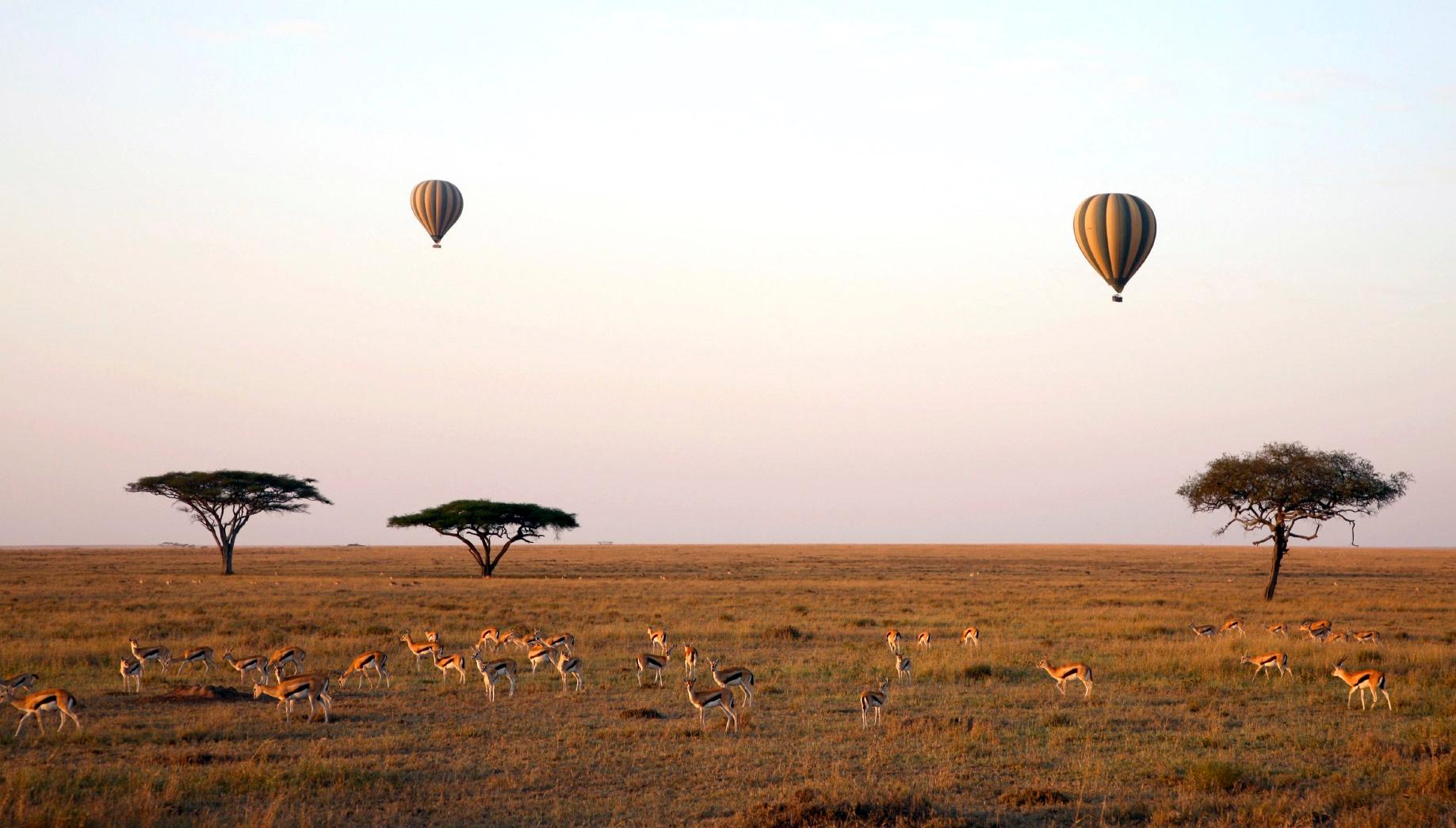
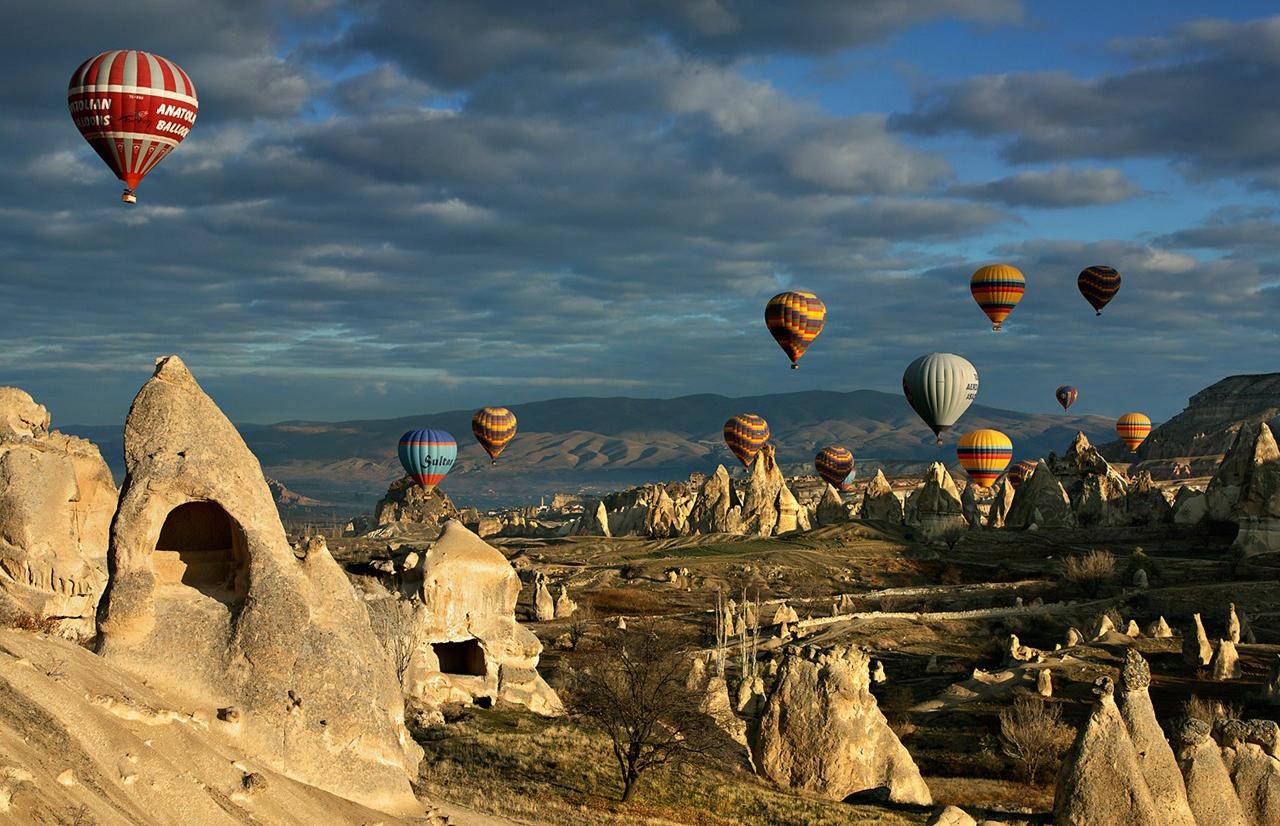
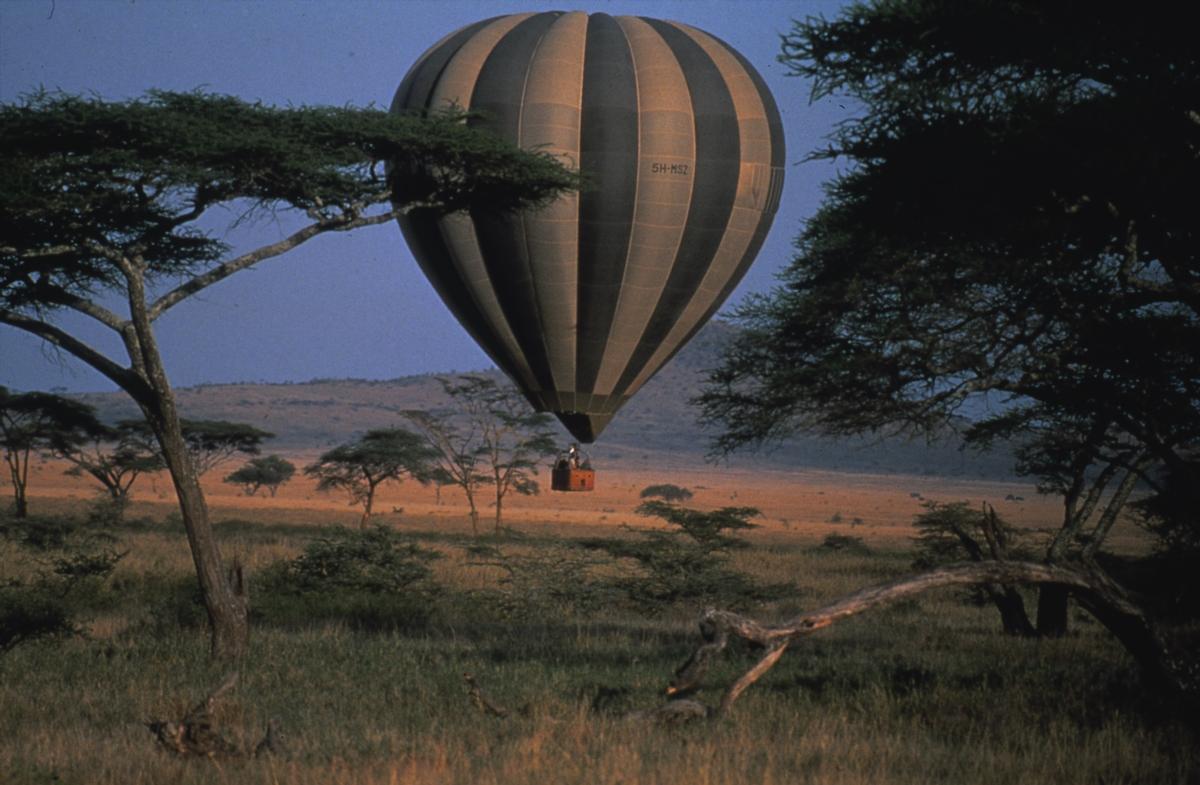
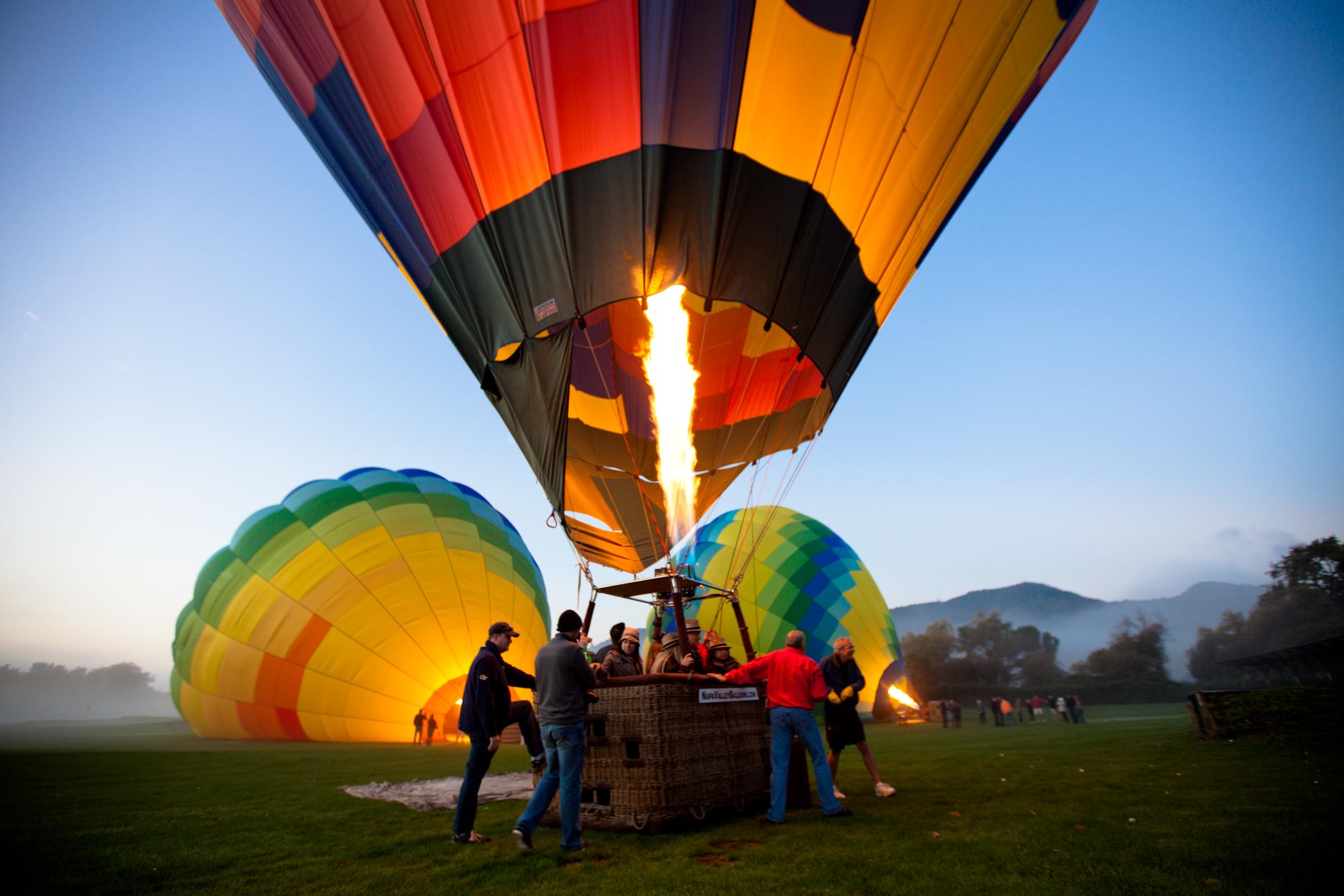
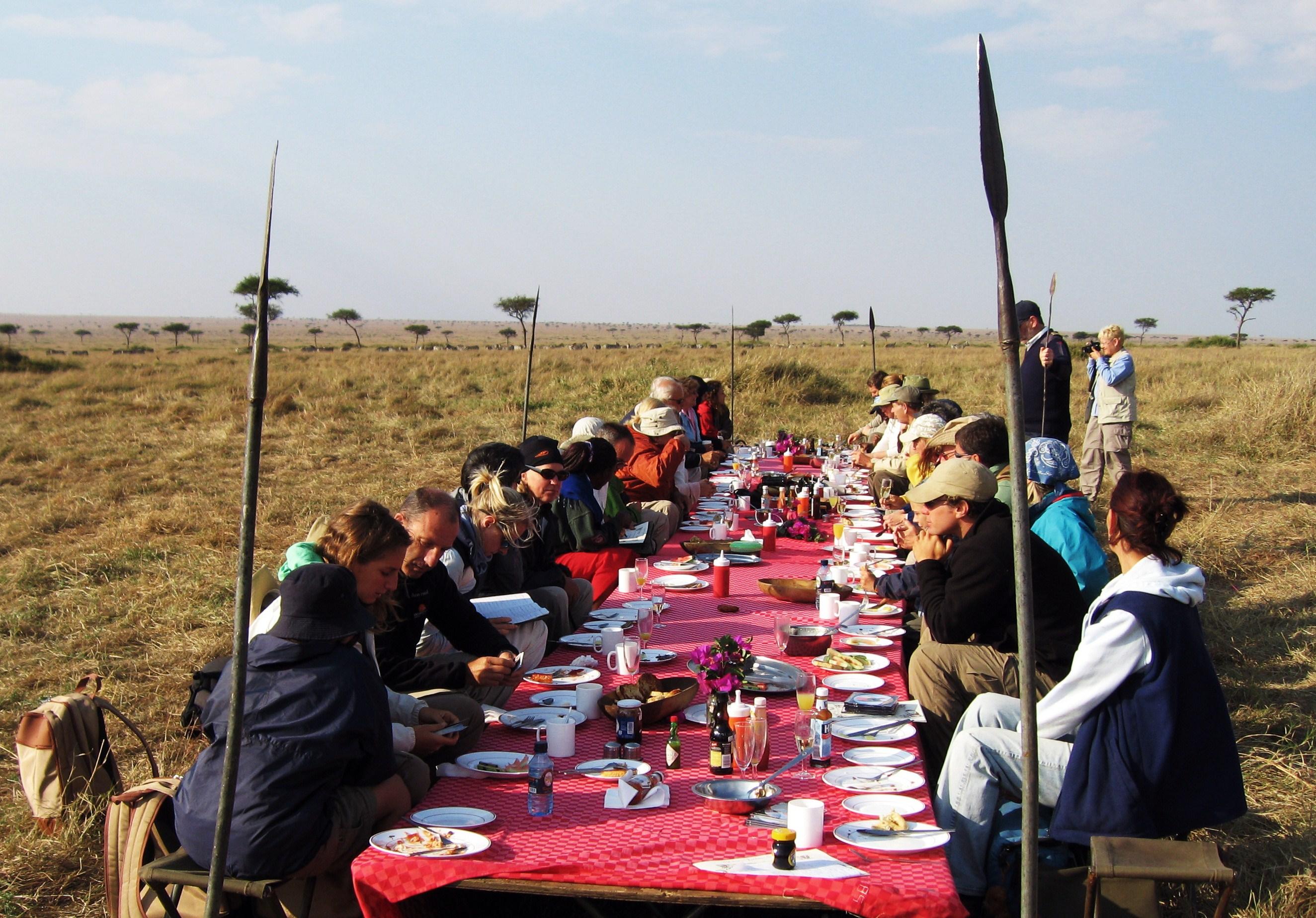
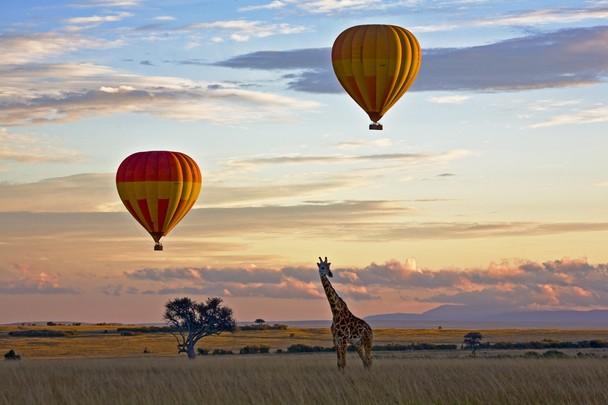
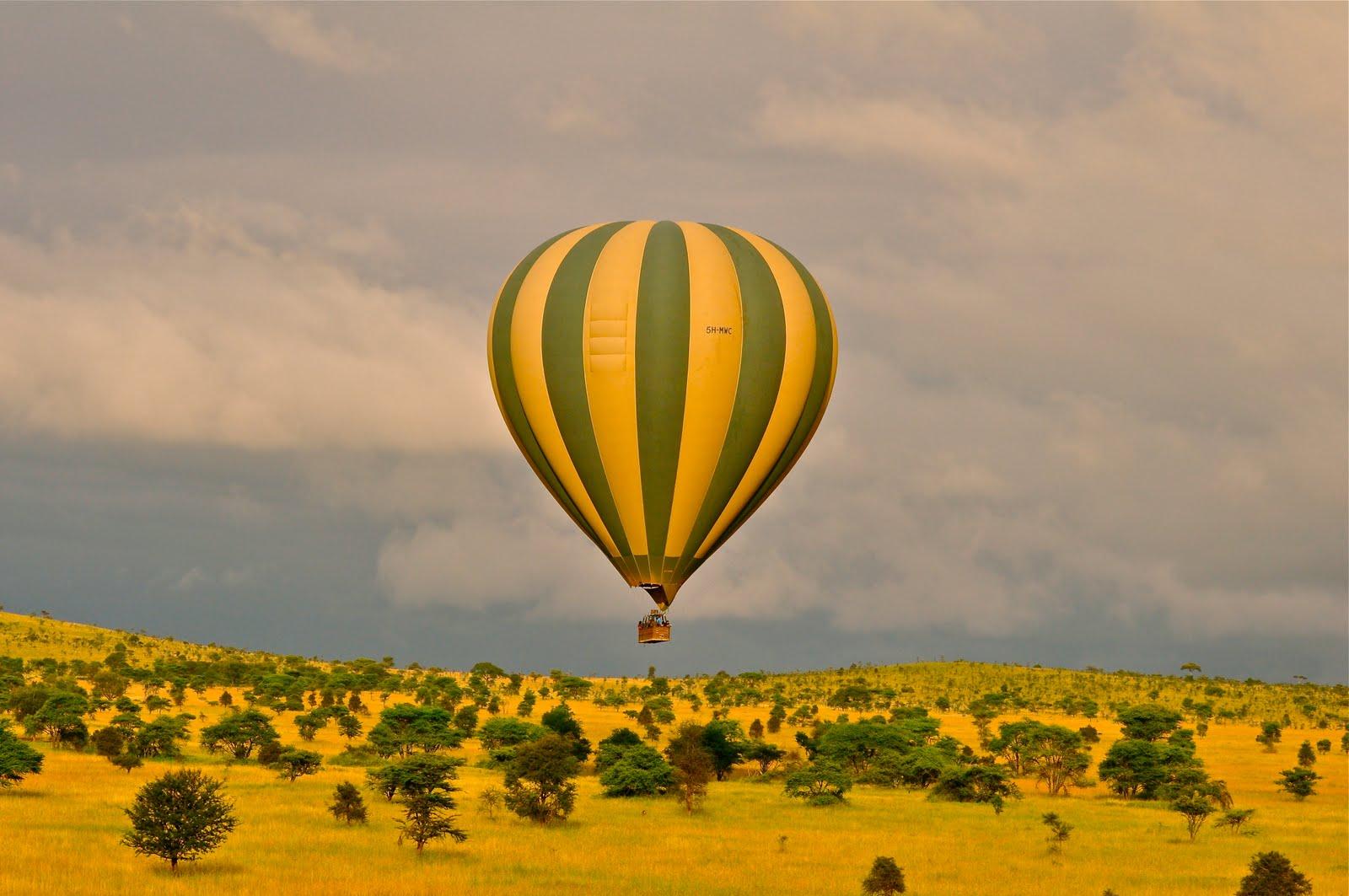
.jpg)
In 1862 Jules Verne, with uncanny forsight, worte ‘Five Weeks in a Balloon’, a tale of exploring Africa by air. Its hero was Dr. Samuel Fergusson, scientist, balloonist and reporter for a London daily.
A hundred years later, in 1962, Anthony Smith made this fantasy come true.
The main purpose of our first flight by balloon over part of the Africa continent was to assess the reaction of the animals in as wide a variety of habitats as possible. No one knew how they would behave below a balloon, but plainly their particular environment would influence then. The Manyara area, in Tanzania, was a complex of utterly different type of countryside. Our camp bordered on a large coppice of yellow thorn tree, and Rift Valley wall was a few mile to the west of it. At the foot of this cliff, and running along in its shelter, was true forest. Identification of the plant species indicated that this belt of tree had formerly been connected to the huge tropical enclave of the Congo basin. It was now a fragment, but large enough to support a population of forest creatures. The balloon would surely drift over it for at least part of the journey.
Then there was the lake. This was either bordered by reedy or dusty marsh, the hunt of buffalo and reed-buck and hippos, or flat and muddy shore lines. Anything might be wandering about on those wide-open spaces, such as giraffes and gazelles, but the actual watery and weedy part of the mud is the home of infinity of birds. Some 600 species have been spotted ay Lake Manyara, and its mixed environment make it an ideal place for observing such a representative collection of African bird life. It is also an amazing spot for flamingoes and pelicans. Sometimes there are a million of these two species living on that stretch of water.
We took off from Manyara, sailing effortlessly, wonderfully, into the vast blue expanse of sky above our launching site. When the take-off had been achieved, and the thorn trees were gliding easily beneath us, I watched the camp recede at some ten miles an hour. There were the waving hands of the ground crew team, and all the vehicle tracks. There were the big lorry marks. There was the path we took to look for hippos. And over there were the tracks leading up to and then away from, that giant termite hummock of red-brown earth. Very quickly the camp was being swallowed up by Africa. The huge tree which had shaded the gas cylinders became as nothing. The tents disappeared; and last of all to go was the white tarpaulin on which Jambo, our balloon, had been inflated.
Are you interested to know more about the balloon safari at Serengeti?
Let us hear from you at +91 33 4046 4646
As suggested and to be customized as per request

 Loading..
Loading..